When most people think about Thailand, they picture Buddhist temples, smiling locals and delicious cuisine. And this is all true. But no trip to the Land of Smiles would be complete without visiting at least one of the spectacular National Parks in Thailand. Nature in Thailand is as mesmerizing as it is diverse.
From idyllic islands to dreamy waterfalls to mountain peaks and abundant wildlife, Thailand’s National Parks have it all. But with over 100 National Parks in Thailand, choosing which one to visit can be tough. This is where this guide comes in.
I spent close to five years living in Thailand and I made it my mission to visit as many national parks and wildlife sanctuaries as I could. Some parks are obviously more striking than others. And in this guide, I am offering you my pick of the best National Parks to add to your Thailand itinerary.
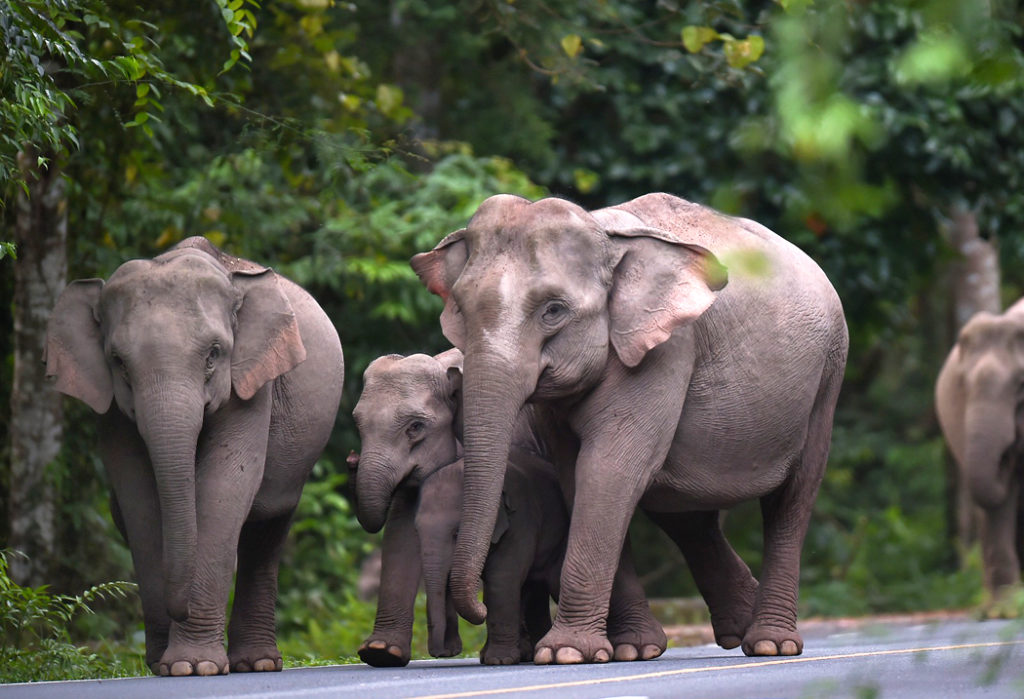
This curated list of National Parks in Thailand is organized by four regions: southern, central, northern, and northeastern to make planning easier for you.
If you don’t have the time to read the whole list, and would rather know what the best parks are for your interests, here’s the high-level summary.
For spectacular coastal landscapes and iconic limestone formations head to Ao Phang Nga National Park. For the misty mountains, pick Doi Inthanon. For dreamy waterfalls – Erawan National Park. For the best wildlife watching, spend a couple of days in Khao Yai or if you have your own transport, go camping in Kaeng Krachan National Park. And to get off the beaten path, journey to Thi Lo Su waterfall in Umphang Wildlife Sanctuary.
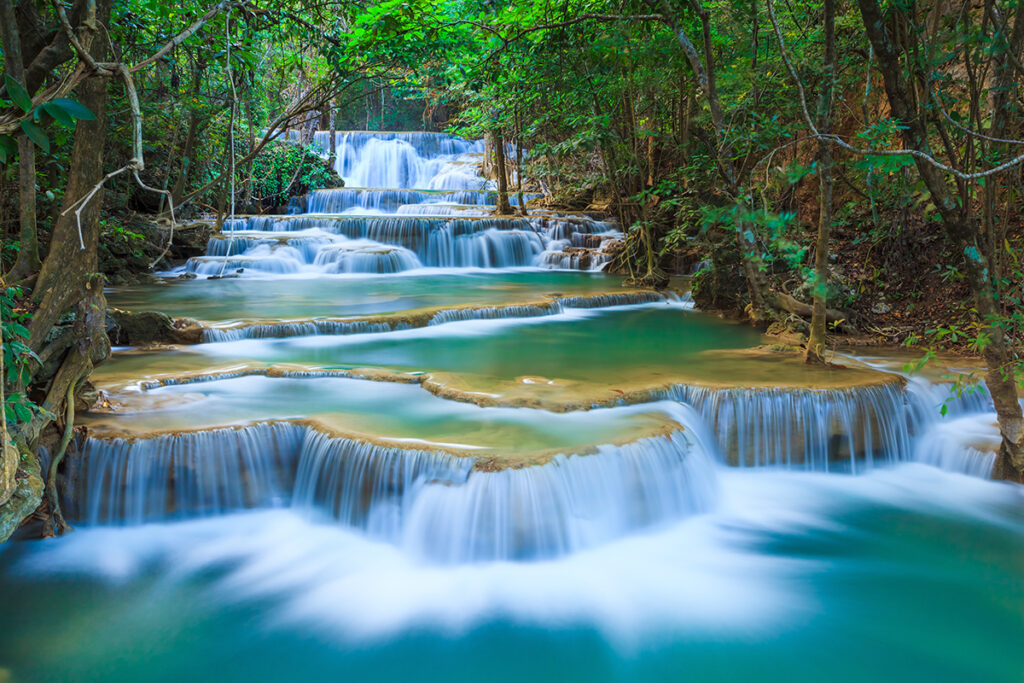
Before we dive in, here’s the lay of the land for National Parks in Thailand.
How many National Parks are there in Thailand?
For a country that’s smaller than the state of Texas, Thailand packs quite a punch for its size with a whopping 147 national parks.
What is the largest National Park in Thailand?
At 2,915 sq km (1,125 sq mi), Kaeng Krachan is Thailand’s biggest National Park.
What is the highest mountain in Thailand?
Located in Doi Inthanon National Park, Doi Intanon Mountain is Thailand’s highest at 2,565 meters.
Where can you see wild elephants in Thailand?
Khao Yai and Kui Buri National Parks are the best places in the country for spotting elephants in the wild.
How much does it cost to visit a National Park in Thailand?
Most Thai National Parks attract an entry fee of 400 Baht for foreign nationals.
Can you visit National Parks in Thailand on organized tours?
Yes, many Thai National Parks can be visited on day tours. I provide details of the best tours for each park below, where available.
National Parks in Southern Thailand
The landscape of Southern Thailand is all about the dramatic limestone formations, idyllic islands with sandy beaches, and thick tropical jungles away from the coast.
Khao Sok National Park
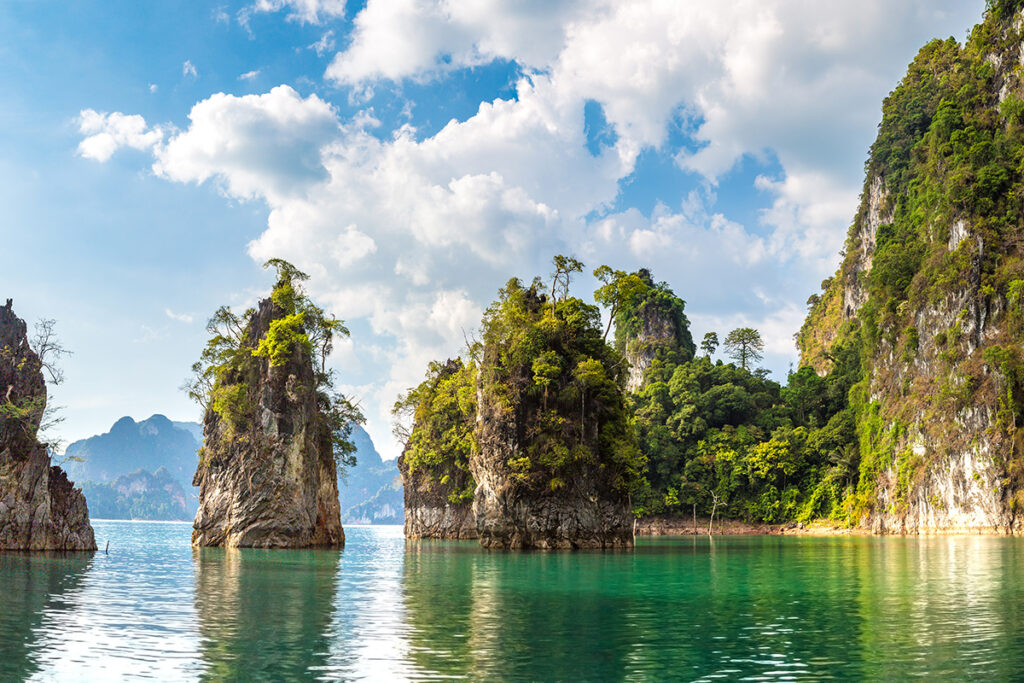
Khao Sok National Park may just be the most beautiful national park in Thailand. Cheow Lan Lake with its jungle-covered banks, limestone pillars rising out of the lake and a network of green islands and aquamarine bays is just remote enough to keep the air of tranquillity. There is no electricity or running water here, just the serene floating bungalows and mostly impenetrable jungle with a few trails cut for ecotourists.
Not many people realize that there are two equally popular areas in Khao Sok that are almost 70 kilometres apart. The area around the park’s headquarters is what’s typically referred to as Khao Sok National Park or Khao Sok Village. Here you can hike jungle trails to several waterfalls or go rafting on the wonderfully serene Khao Sok River. It is also a good place for spotting some of the park’s wildlife.
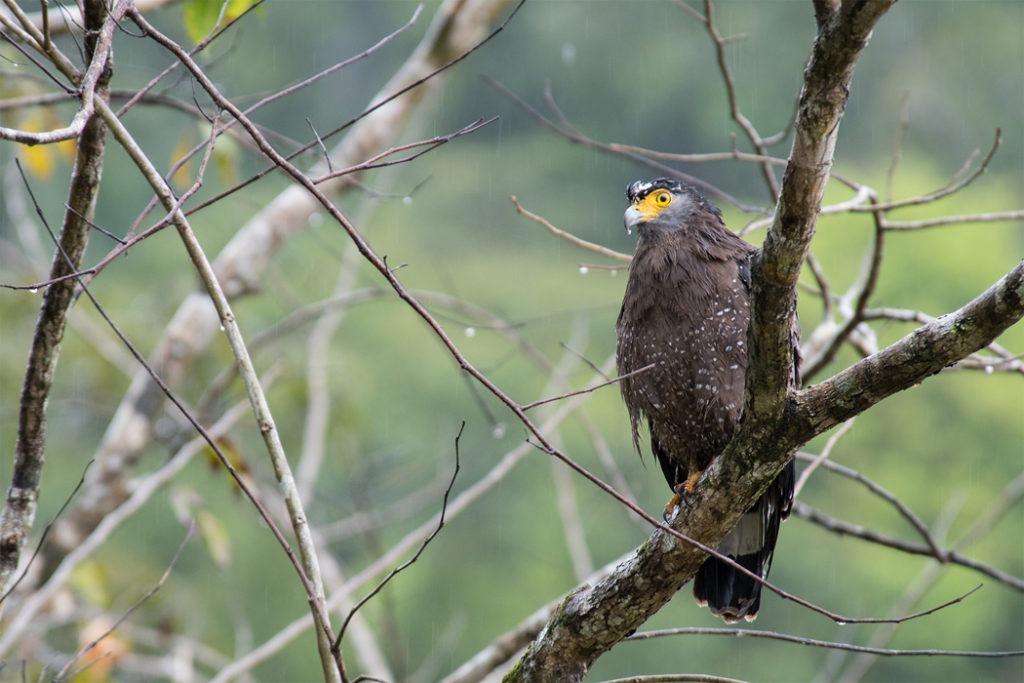
The second area is Cheow Lan Lake, often unhelpfully referred to as Khao Sok National Park by tour agencies. The lake is mesmerizingly beautiful. And the best way to appreciate it is by joining an overnight tour to stay in one of the floating bungalows and spend your days trekking in one of the world’s oldest rainforests.
The easiest way to visit the lake is on an organized tour either from Krabi, Phuket or Khao Lak or from any of the guesthouses in Khao Sok Village. If you have the time, visit both parts of the park. If not, head to Cheow Lan Lake. You can find more details in my guide to visiting Khao Sok National Park.
Ao Phang Nga National Park
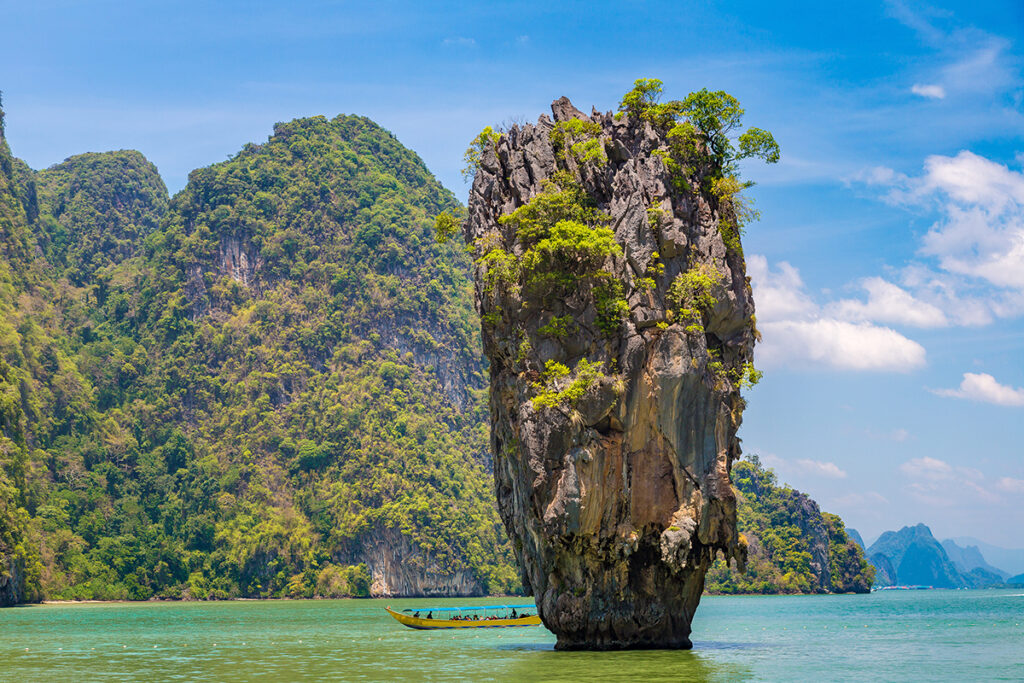
When most people think about Southern Thailand, they picture the limestone pillars rising out of the still aquamarine waters of the sea. This iconic image comes from Ao Phang Nga National Park which is home to dozens of these tower karst islands, including the famous “James Bond Island”, where the James Bond movie The Man with the Golden Gun was filmed.
The white sandy beaches and calm waters of Ao Phang-Nga National Park offer the best canoeing destination in Thailand. The best way to visit Ao Phang-Nga is on a day tour from Phuket. Most organized tours include a visit to James Bond Island, and to Pan Yee Island which is a Muslim fishing village with houses built on stilts.
Apart from the islands, Ao Phang-Nga is known for its lagoons and limestone caves, including the prehistoric Nak Cave that conceals cave paintings by its early human inhabitants. Other caves are long caverns that lead open out onto lagoons. To explore the caves, book a tour that includes canoeing, like this one.
Ko Lanta National Park
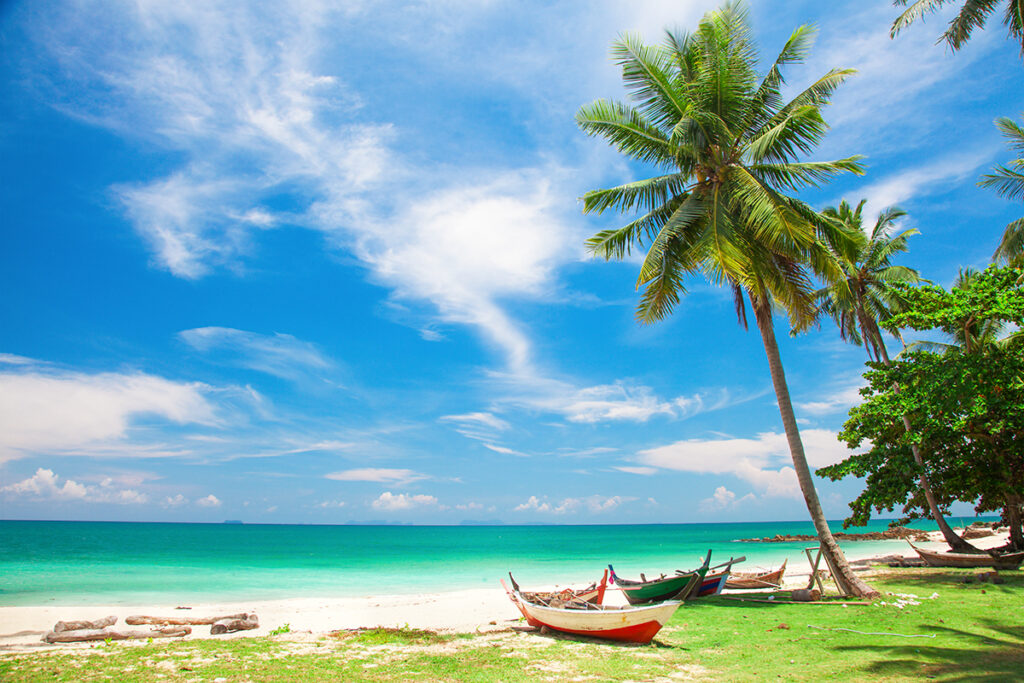
Located on the Andaman Coast, in the southern part of Krabi Province, Mu Ko Lanta National Park is comprised of 16 islands spread over an area of 134 square kilometres.
The biggest island in the park is Ko Lanta Yai which is home to the biggest section of the rainforest in the park. The smaller islands are popular diving and snorkelling spots.
The easiest way to visit Mu Ko Lanta is by staying on Ko Lanta Yai island. Only the southern tip of the island is part of the national park, so you can base yourself on the island and visit the national park section on a day trip. The national park headquarters are located at the 300-meter-long Tha Nod Beach crowned by a lighthouse that can be reached by the 1.7 km Nature Trail.
There are plenty of things to do on Koh Lanta and you can enjoy the smaller islands of Mu Ko Lanta National Park by joining an organized tour from Ko Lanta Yai. For the most atmospheric experience, you can join a full-day snorkelling tour on a longtail boat that also takes in a visit to the emerald cave. And if you are very lucky, you may spot dugongs on your trip.
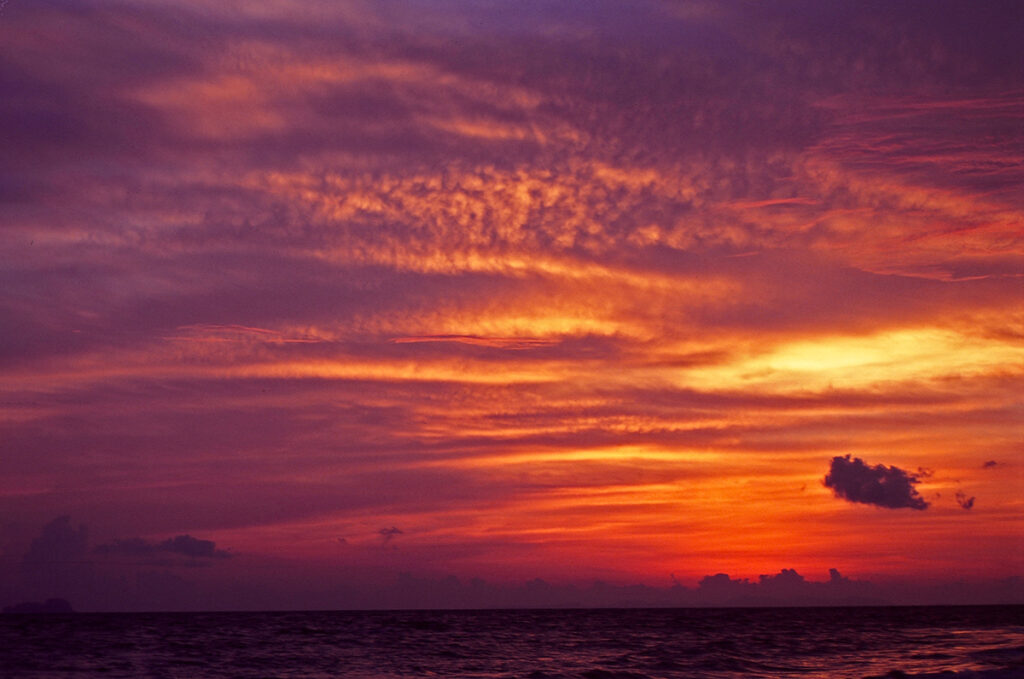
Beyond the spectacular beaches, islands, and underwater caves, Mu Ko Lanta is home to nomadic sea gypsies called Chao Le, known for their simple lifestyle and their tradition of setting boats adrift during the full moon in June and November.
I spent a month living in a beach hut on the nearby island of Ko Jum in a guesthouse run by a local sea gypsy, Dilli. Once I asked Dilli if she would like to grow her business, perhaps have electricity brought to the property (she was running a generator for a few hours each evening), and potentially have more guests coming to stay with her. But she was completely content to live a simple life as long as she was by the ocean. Some days we collected pipies on the beach which she then cooked and served for dinner. And each night we watched spectacular sunsets over Ko Lanta Yai that rose out of the sea on the horizon.
National Parks in Central Thailand
While Southern Thailand is all about sandy beaches and idyllic islands, Central Thailand National Parks are forested environments with plentiful wildlife and exquisite waterfalls.
Erawan National Park
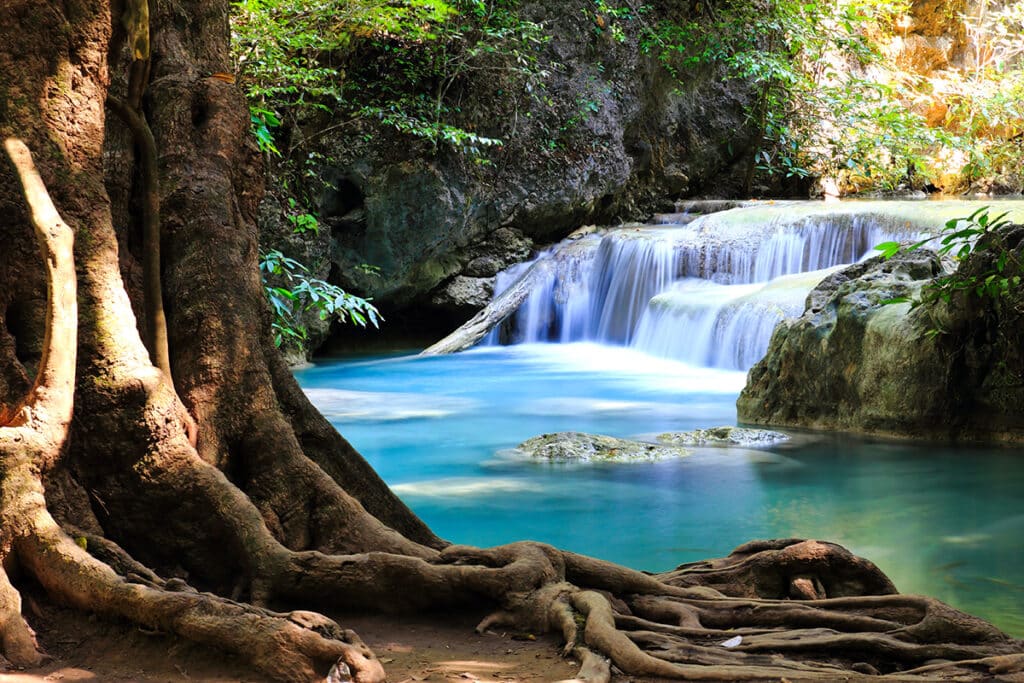
Located in Kanchanaburi Province, just under 70 kilometres from Kanchanaburi town (or 190 km west of Bangkok), Erawan National Park is one of the most beautiful National Parks in Thailand. The park’s main draw is the dreamy 7-tiered Erawan Waterfall with crystal-clear emerald-blue-coloured plunge pools.
The mesmerizing colour of the water is due to the presence of calcium carbonate in the water. As the river runs down the limestone mountain, it collects calcium carbonate and takes on the characteristic turquoise colour.
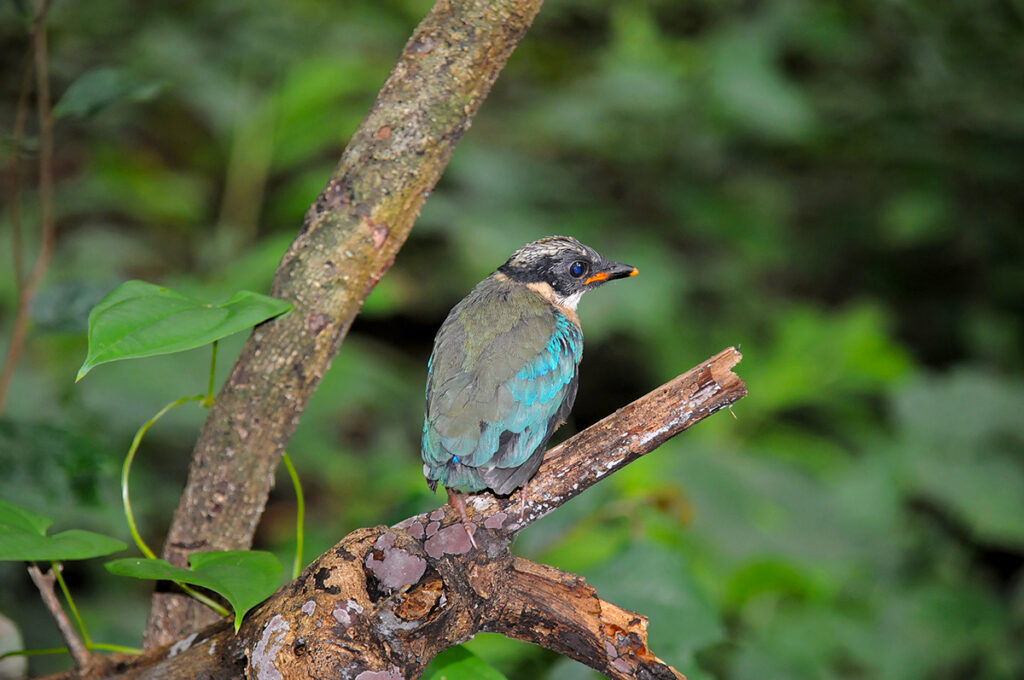
A 2-km return trail leads from the park’s headquarters to the top of the waterfall and you can swim in most of the plunge pools along the way.
The trail is very picturesque, even when you walk between the waterfalls. You’ll cross over wooden bridges, up the stairs, around massive moss-covered boulders, and across the river a few times. Allow about 4 hours for the return hike and a swim.
Erawan National Park is also quite easy to visit. You can either take a minivan shuttle from Bangkok or a local bus from Kanchanaburi. Alternatively, you can visit the park on an organized tour from Bangkok if you don’t mind a long day. You can find more details and photos in my guide to visiting Erawan National Park.
Kaeng Krachan National Park
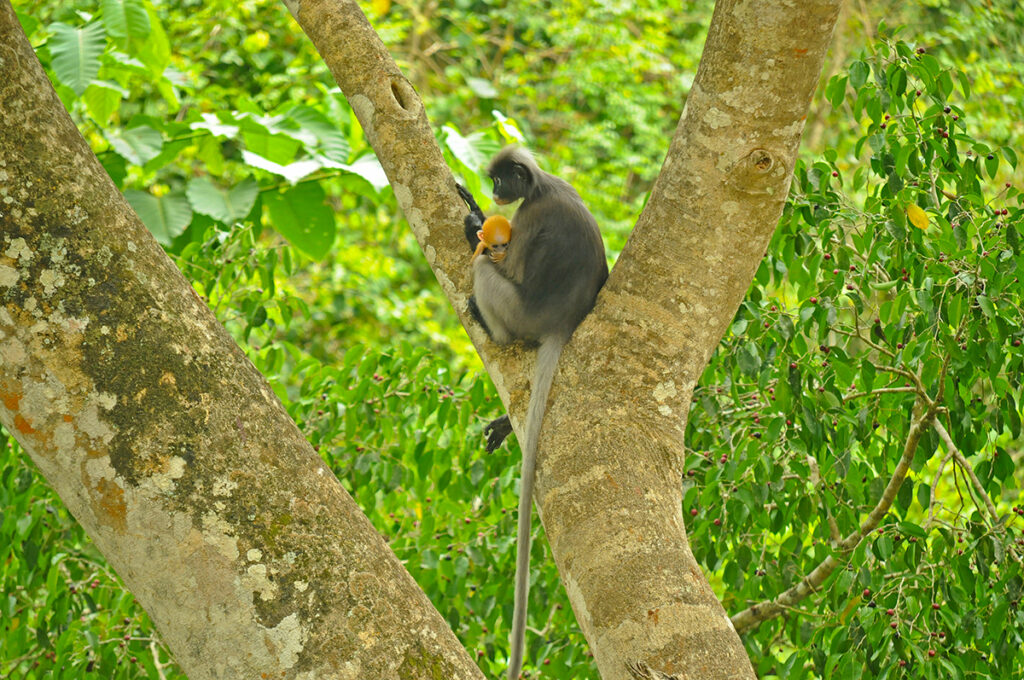
The largest National Park in Thailand, Kaeng Krachan protects almost 3,000 square kilometres of mountainous terrain in Phetchaburi and Prachuap Khiri Khan Provinces, about 75 km from Hua Hin. It is the latest Thai National Park to be added to the UNESCO World Heritage List.
The main attraction of Kaeng Krachan is the diversity of wildlife species that can be seen at the park. White-handed gibbons, dusky langurs, common palm civets, Malayan porcupines, Sambar and barking deer, stump-tailed macaques and black giant squirrels are common in the park. Spotting other species, like Asian elephants, common jackals, and leopards requires more luck.
Bird watching in Kaeng Krachan is superb. And the park is also one of the best places in the country to see Thailand’s butterflies – around 300 species have been recorded in Kaeng Krachan.
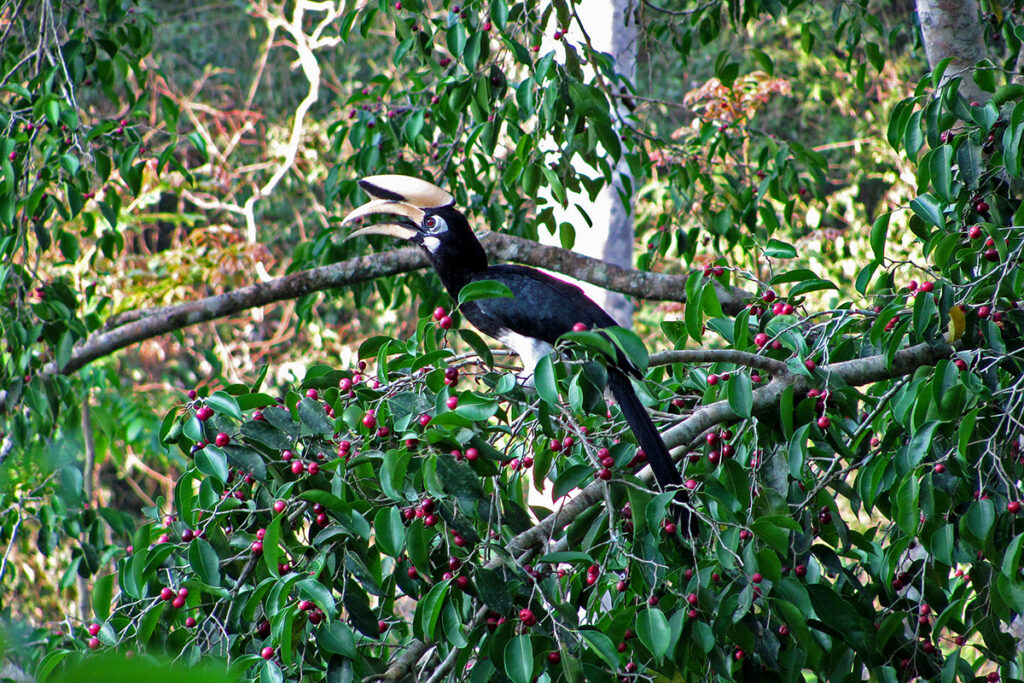
Beyond wildlife watching, Kaeng Krachan is famous for the sea of mist that covers the entire valleys in the early hours of the morning during the winter months from November to February.
Unlike many of the National Parks in Thailand, Kaeng Krachan is not easy to visit without a car. There isn’t much tourist infrastructure in the park and the main accommodation options are two campsites: Ban Krang in the valley and Phanoen Thung on top of a mountain, 950 meters above sea level.
There aren’t any good dedicated wildlife-watching tours to Kaeng Krachan on offer in Hua Hin. But the National Parks office offers some tours that can be booked directly on their website.
To get an idea of what to expect and which of Thailand’ animals you can spot in the park, read my guide to wildlife watching in Kaeng Krachan National Park.
Khao Sam Roy Yot National Park
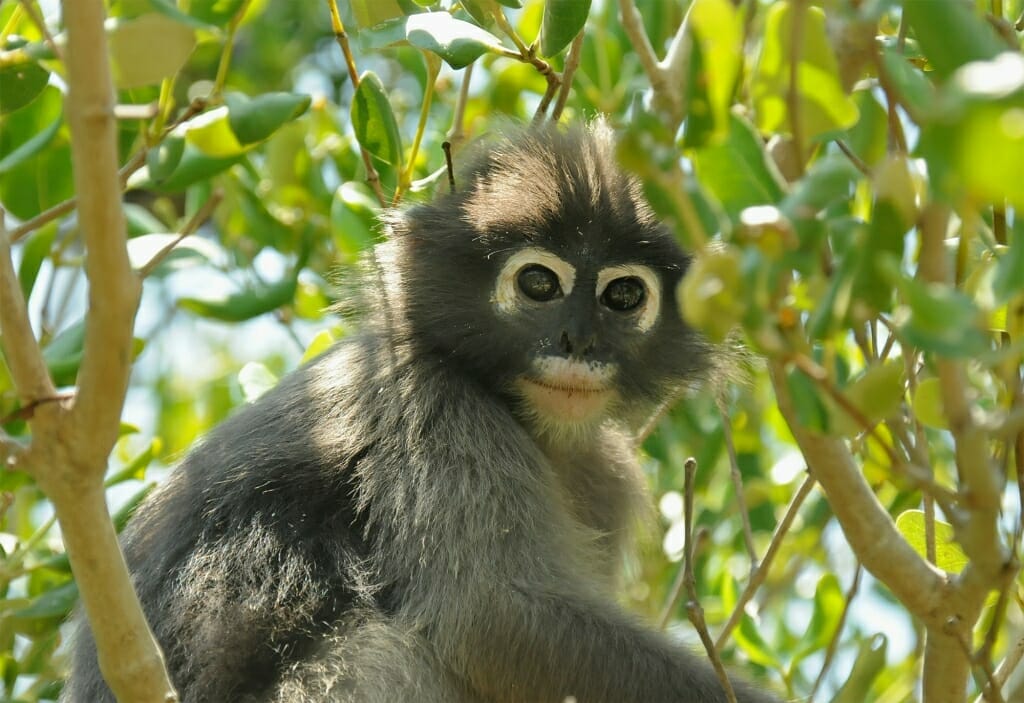
Famous mainly for its magnificent cave temple – Phraya Nakhon Cave, Khao Sam Roy Yot National Park is also a fantastic wildlife-watching destination. The park is located just under 60 km south of Hua Hin and was named for its mountain peaks – Khao Sam Roi Yot means a mountain of 300 peaks.
To reach Phraya Nakhon Cave, you’ll have to climb one of these peaks. It’s hard work but the cave is quite extraordinary. It is so vast that there is a patch of forest growing within it.
The delicate Royal Pavilion is positioned below the cave’s collapsed roof in such a way that the pavilion is often bathed in the soft light that filters through the large opening. The scene is so atmospheric that Phraya Nakhon Cave has become the most photographed cave in Thailand.
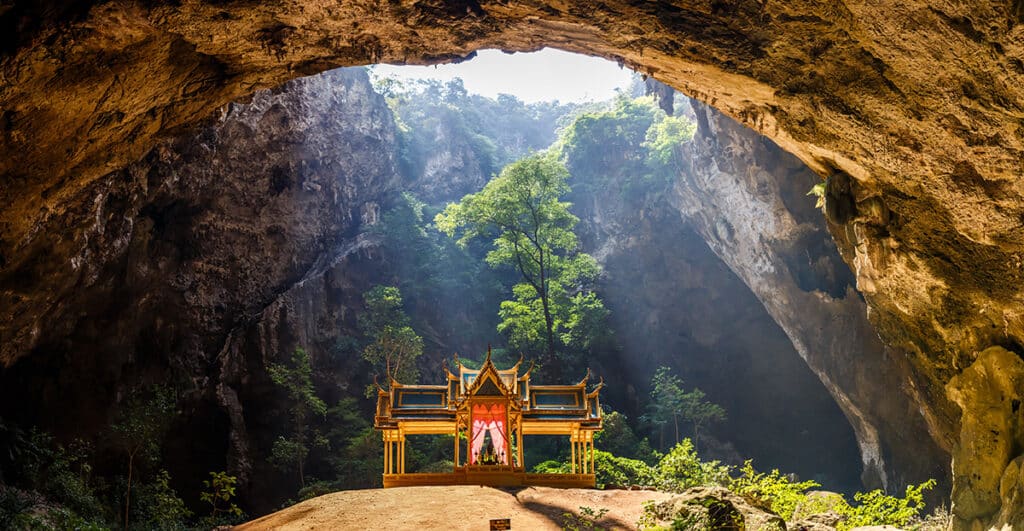
Beyond the cave, Khao Sam Roi Yot is the best National Park in Thailand for encountering Dusky langurs at close range. You can usually spot them from the mangrove walkway at the park’s headquarters.
Another opportunity to see some of the park’s wild inhabitants is a cruise along the winding Klong Khao Daeng canal. The jetty is located next to the Khao Daeng Temple – one of the prettiest forest temples I have seen in all my five years living in Thailand. It looks like a scene from a fairytale, set against the background of towering cliffs and framed by coconut palms.
There is no public transport going to Khao Sam Roi Yot. So options are either to rent a car or a schooner in Hua Hin or to take a day tour from Hua Hin. The typical tour includes a visit to Phraya Nakhon Cave and the Khlong Khao Daeng Mangrove boat ride. You can find more details and images in my guide to visiting Khao Sam Roi Yot National Park.
Ko Chang National Park
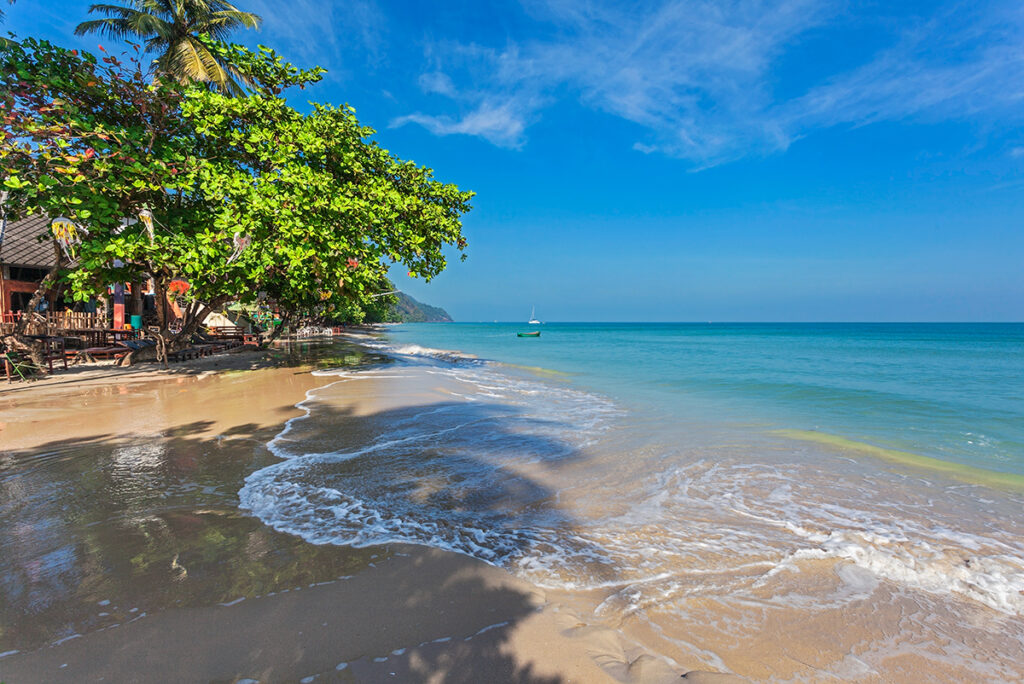
If you are looking for an island getaway in Central Thailand, Ko Chang is where you want to go. Considered one of Thailand’s most beautiful islands, it is part of Mu Ko Chang National Park which protects 52 islands spread over 650 square kilometres in the Gulf of Thailand offshore from the coast of Trat Province.
The island is home to idyllic beaches, mangroves, 6 waterfalls and a must-see Kai Bae viewpoint on the west coast where most of the beachside accommodation options are located.
Mu Ko Chang is a marine national park, so most of its biodiversity is found below the surface of the water. In fact, the park is famous for being one of the world’s top diving and snorkelling destinations.
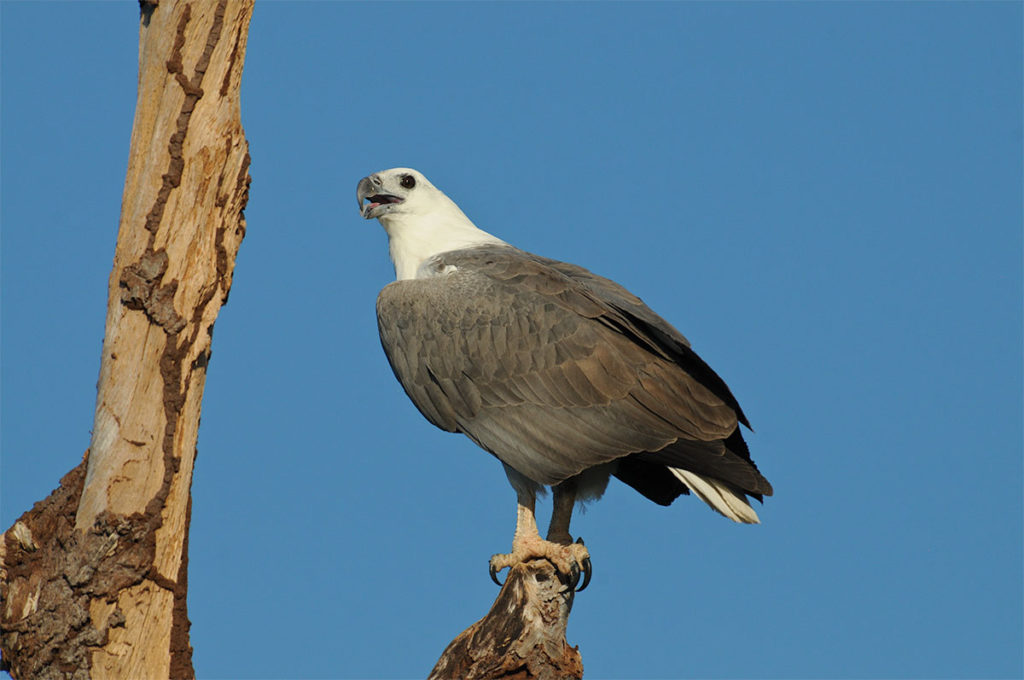
The way to explore the reefs of Mu Ko Chang is to join either a diving or a snorkelling tour. The snorkelling adventures take you to several islands so you get to experience different parts of the national park.
Another popular thing to do on Ko Chang is sea kayaking. Whatever you do, you are likely to see White-bellied sea eagles and Brahmini kites soaring above the sea and the beaches.
To reach Ko Chang catch a ferry from Ao Thammachat Pier in Trat. The ride takes about 45 minutes. It is a good idea to rent a scooter for zipping around the island, especially if you want to visit some of the waterfalls or the mangrove walkways in the eastern part of the island.
National Parks in Northeastern Thailand (Isan)
The largest region in Thailand, Isan or Isaan, hugs the border with Laos and Cambodia in the country’s northeast. Isan today is what Thailand was 20 years ago – laid-back, unhurried, and largely authentic.
Khao Yai National Park
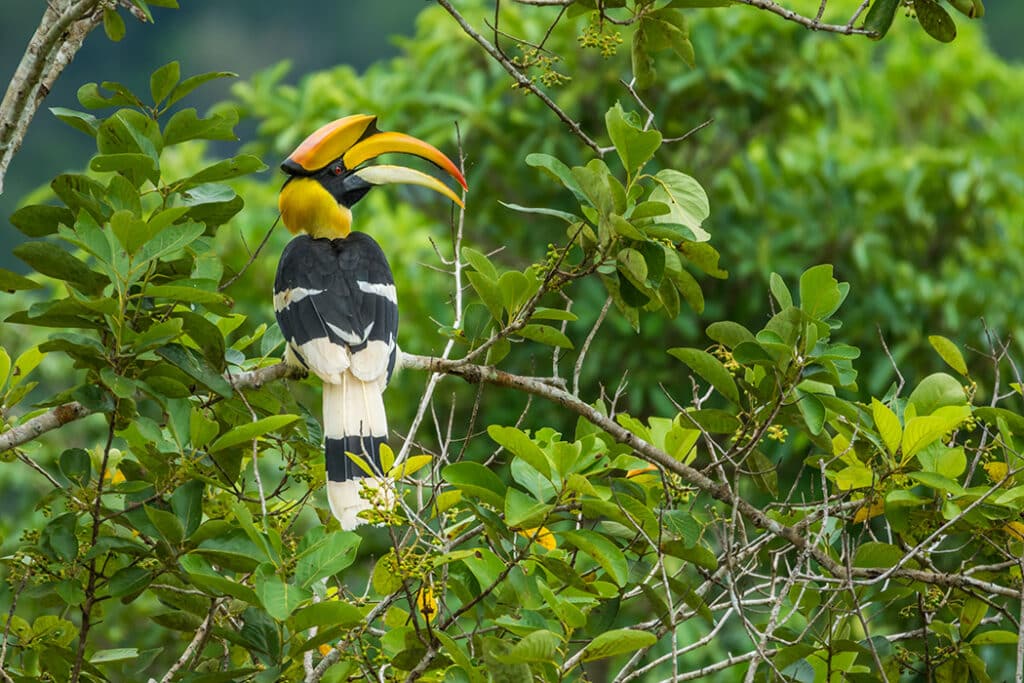
Lying just 137 km east of Bangkok, in Nakhon Ratchasima Province, Khao Yai National Park is one of the best places in Southeast Asia to see the region’s wildlife.
At 2168 sq km, Khao Yai is the third largest National Park in Thailand. It protects one of the largest primarily intact monsoon forests in South East Asia, which earned the park the status of a UNESCO World Heritage site.
You can expect to see several species of Hornbills in Khao Yai, Pig-tailed Macaques, Black Giant Squirrels, White-handed Gibbons, Sambar and Barking deer, and Asiatic Elephants. In fact, Khao Yai is one of the best National Parks in Thailand to see elephants in the wild.
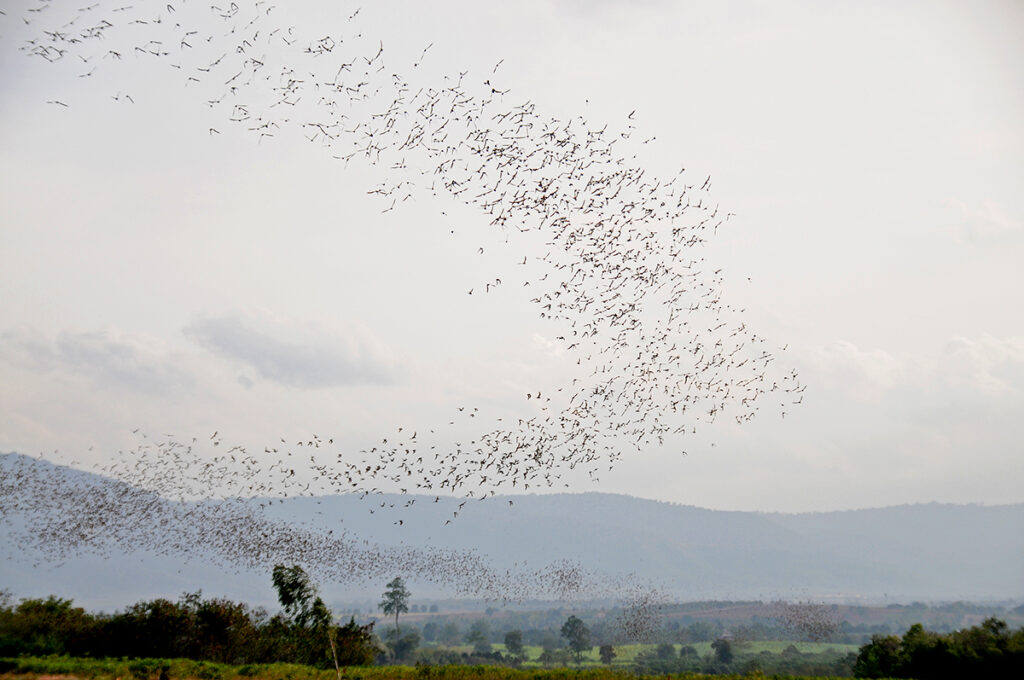
Another wildlife spectacle you can visit on your trip to Khao Yai is the emergence of millions of Wrinkle-lipped Bats from Khao Luk Chang Bat Cave at sunset.
Being so close to Bangkok, Khao Yai is an easy park to visit. The best option is to make your way to Pak Chong (the closest town to Khao Yai National Park) for a couple of days and book a full-day tour to the park from your accommodation. But if you are short on time, you can visit Khao Yai on an organized day trip from Bangkok. You can find more details and images in my guide to visiting Khao Yai National Park.
Phu Kradueng National Park
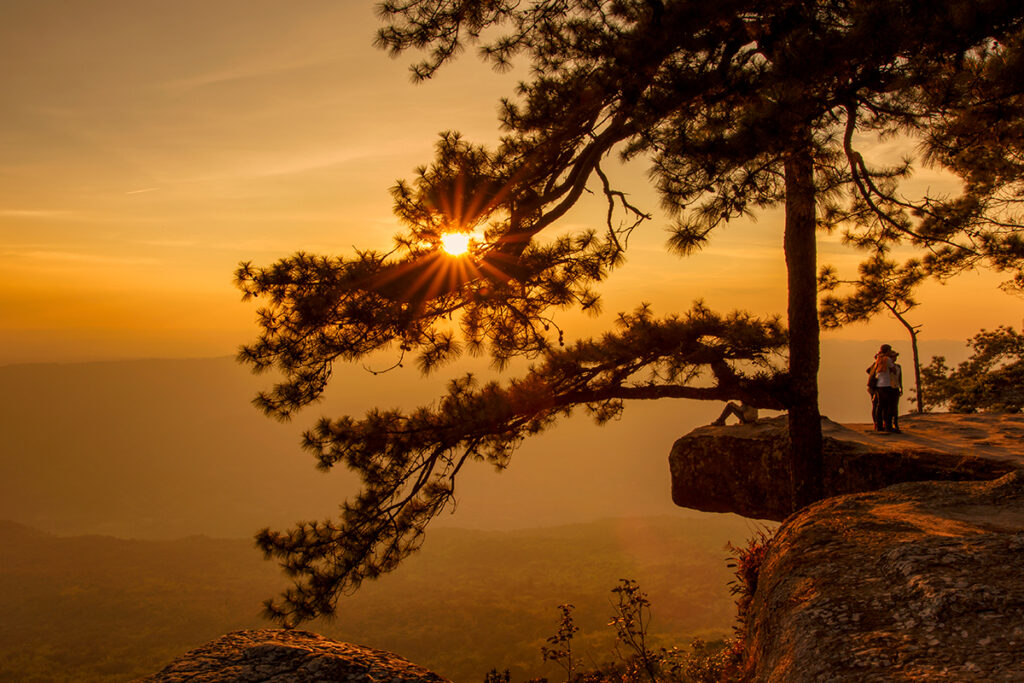
Located in the province of Loei, Phu Kradueng is one of the most popular National Parks in Thailand but it is virtually unknown to the tourists. This park is the perfect hiking destination – the main activity here is hiking from the visitor centre to the campground at the top of the mountain to watch sunsets and sunrises.
The 8.7 km trail to the top campsite is quite challenging. It gains almost a kilometre in altitude and takes about 5 hours to reach the plateau. The trailhead at the visitor centre opens at 6 am and closes around 1 pm. Leaving the visitor centre later than 1 pm won’t leave you enough time to reach the top campsite in daylight.
In terms of navigation, the trail is easy, and in the steepest parts, there are wooden stairways to help you walk. Thai people are generally not into hardcore mountain trekking, and they’re various services available to make the hike easier.
There are several rest areas along the trail with shops selling food, drinks, and coffee. You can also hire porters at the visitor centre to carry your heavy backpacks up the trail. And if you are not a fan of sleeping in a tent, there are some cabins available for rent at the top campsite.
Once you make it to the main campsite on top of the mountain, you probably won’t want to walk any more trails, so the first afternoon will be all about settling in and enjoying the iconic views at sunset from Lom Sak Cliff & Viewpoint. Once the night falls, you can stargaze to your heart’s content. The night sky here is incredible.
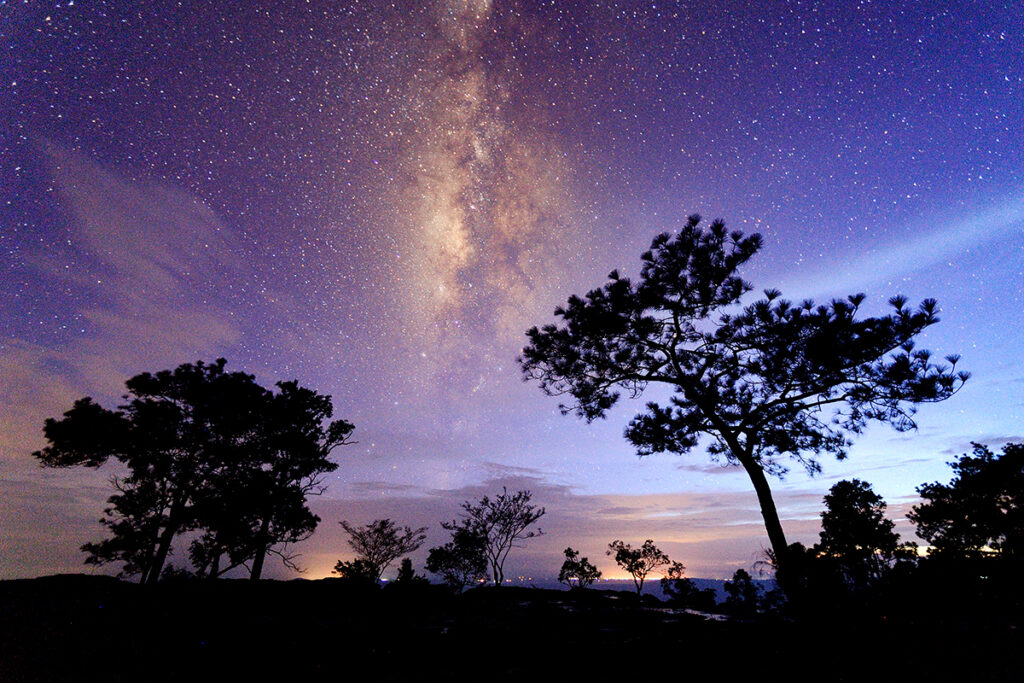
Make sure to wake up for sunrise – this is why you climbed to the top of the mountain in the first place. There are also several walking trails on the plateau. One of the prettiest ones leads to the beautiful Wang Kwang Waterfall where you can walk behind the curtain of falling water.
Phu Kradueng National Park can be reached by bus from Bangkok. First, you’ll need to catch a bus from Mo Chit bus terminal to Leoi and ask the driver to drop you off at Pha Nok Khao. From there, songthaews run to the park’s visitor centre.
National Parks in Northern Thailand
National Parks in Northern Thailand tend to be mountainous landscapes with spectacular viewpoints and several epic waterfalls.
Doi Inthanon National Park
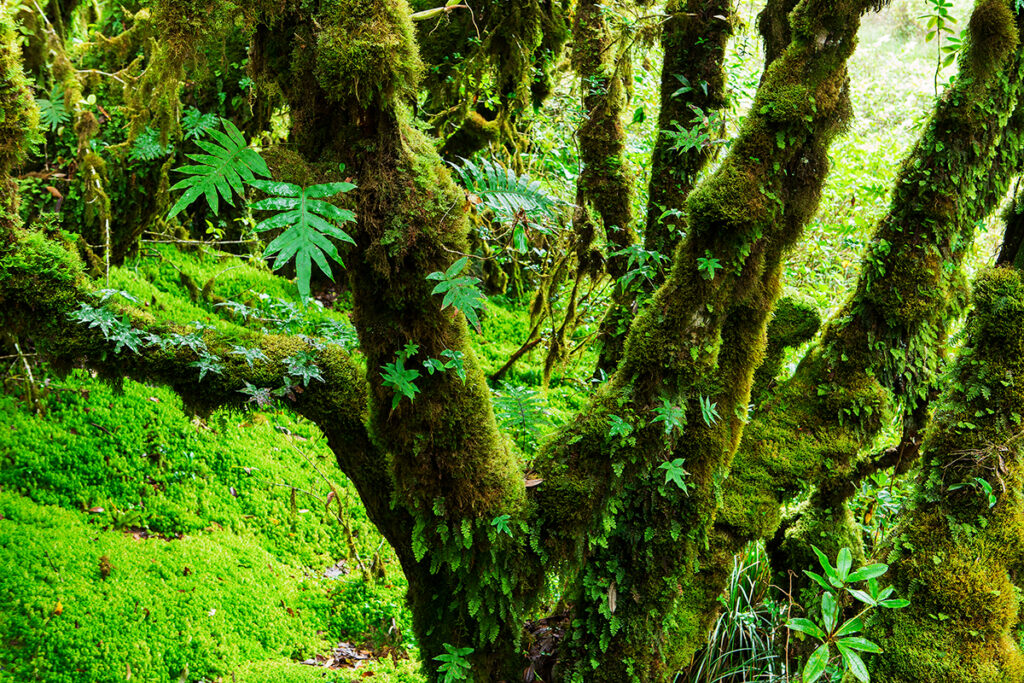
Lying approximately 60 kilometres from Chiang Mai, Doi Inthanon National Park is famous for many reasons but for me, the most special feature of the park is the misty and mossy cloud forest at the top of the mountain.
Incredibly, Doi Inthanon is part of the Himalayan mountain range with Doi Inthanon mountain, Thailand’s highest, reaching an elevation of 2,565 meters above sea level. The altitude and the associated cool temperature combined with the high humidity of the tropics create a very unique environment here – a forest cloaked in thick mist.
Such moist evergreen forests, known as cloud forests are much more common in Central America (think Monteverde cloud forest in Costa Rica). You won’t find cloud forests anywhere else in Thailand.
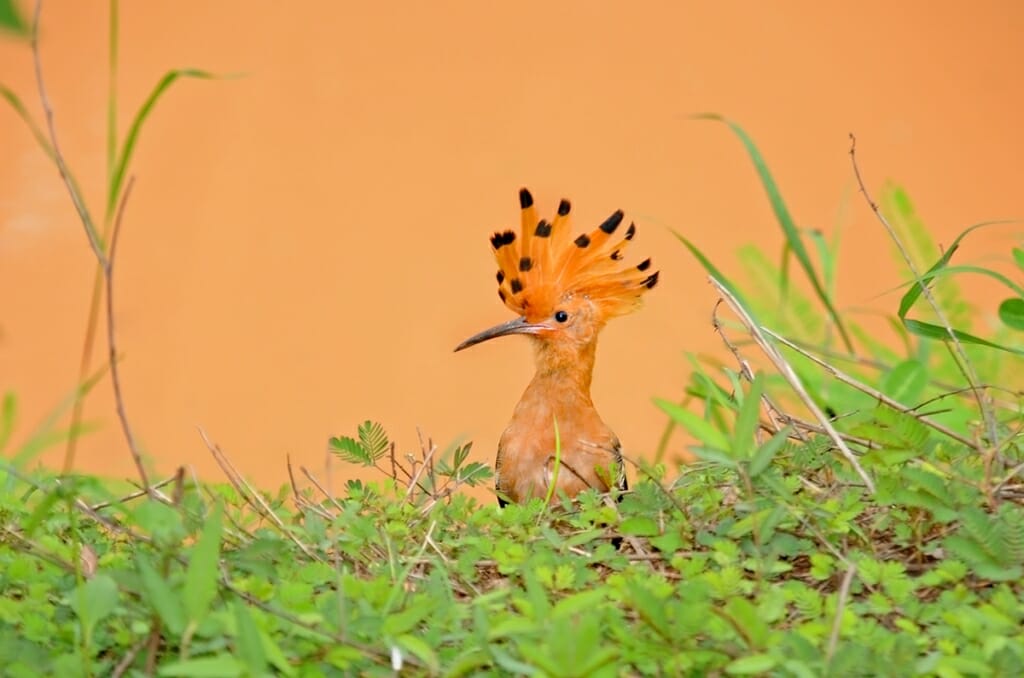
If you are a birder, you’ll know that Doi Inthanon is home to the highest diversity of bird species in Thailand. More than 500 species have been recorded in the park. If birds don’t rock your boat, you can either take the trail to the summit of Thailand’s highest peak, Doi Inthanon Mountain, or Ang Ka Luang Nature Trail. Both trails run through the magical mist-shrouded cloud forest.
It is technically possible to get to Doi Inthanon on public transport from Chiang Mai, but it can take several hours. An easier way is to join an organized tour. When choosing a tour make sure to pick one that includes Ang Ka Luang Nature Trail, like this one.
Huai Nam Dang National Park
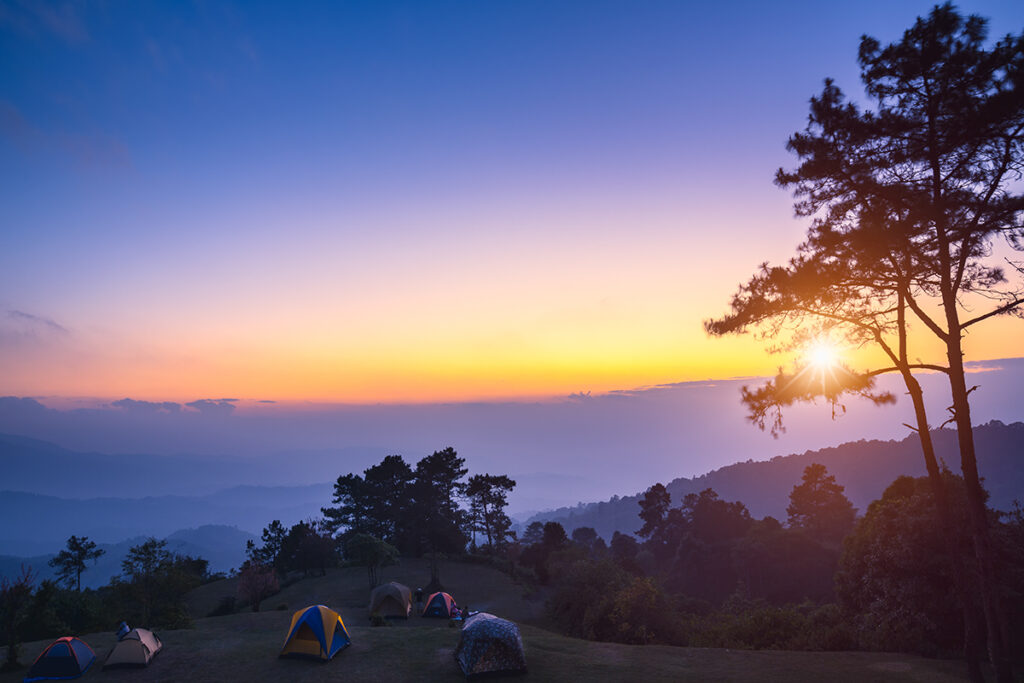
Tucked away among the rugged mountains on the Thai-Burmese border, Huai Nam Dang is a mountainous landscape with scenic viewpoints, waterfalls, hot springs and the famous sea of fog. The park lies roughly between Chiang Mai (50km) and the lovely alpine town of Pai (31 km).
The best way to enjoy Huai Nam Dang is by camping overnight in the park (you’ll need your own camping gear). The view of sunsets and sunrises from the campsite near the park’s headquarters is one of the most famous in Thailand.
The most iconic sight in Huai Nam Dang is the sea of fog that forms over the valleys on winter mornings. The best place to view the fog is the Doi Kiew Lom viewpoint where you can see the peak of Doi Chiang Dao Mountain (the highest in the park) visible above the fog.
Beyond the views, Huai Nam Dang is home to two hot springs: Tha Pai near the town of Pai and Pong Dueat Geyser on the Chiangmai Mai side. If you are choosing between the two, opt for Pong Dueat. It takes more effort to get to but it is much more scenic.
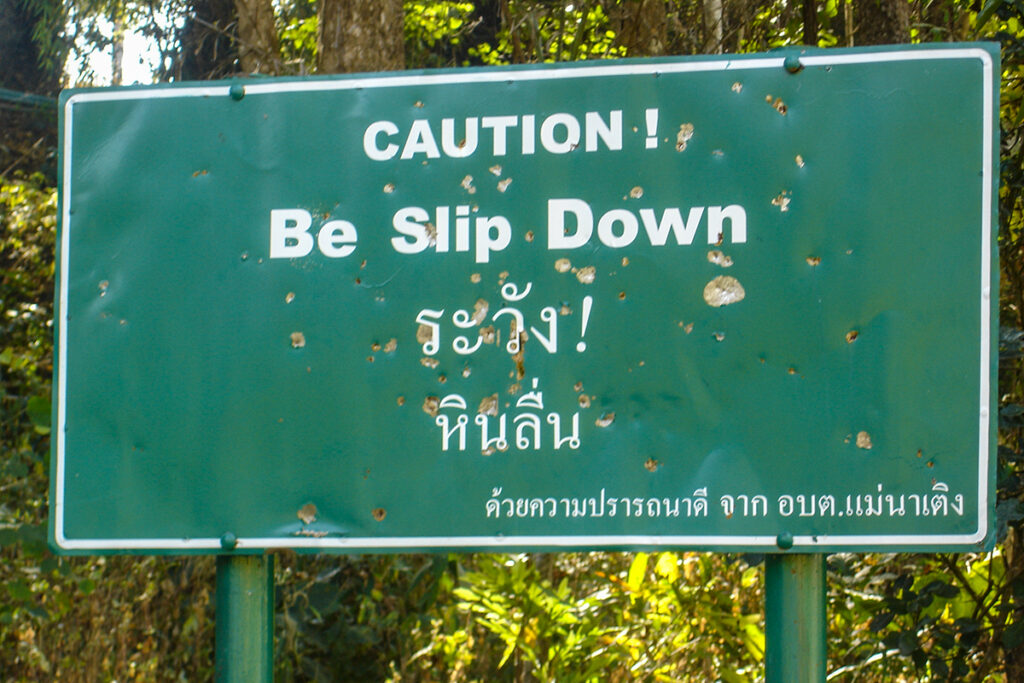
There are also several waterfalls in the park, including the four-tiered Huai Nam Dang waterfall which is about 50 meters high and 40 meters wide. Another is the single-drop Mae Yen waterfall reached by a 14-km return hike from Pai. In fact, the hike to Mae Yen waterfall is the best way to explore Huai Nam Dang for free. It takes about 2-2.5 hours to reach the waterfall, so make sure to carry plenty of water. A swim underneath a waterfall is your reward at the end of the hike.
Umphang National Park
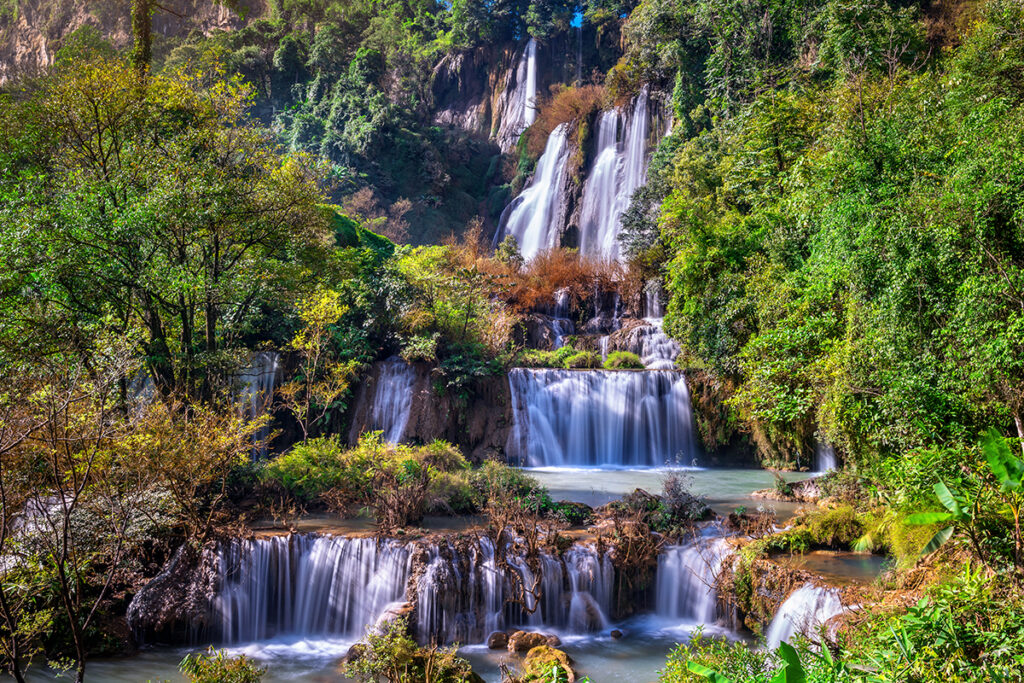
Tucked away in a remote corner of northeastern Thailand, in Umphang Wildlife Sanctuary – a UNESCO World Heritage site, is one of the country’s most beautiful waterfalls – Thi Lo Su Waterfall. It flows in multiple streams down the side of a forested mountain in a Tolkienesque landscape. It always reminds me of Rivendell from the Lord of the Rings movies.
And what makes Thi Lo Su Waterfall even more enchanting is its remote location. There is no simple way of getting to Thi Lo Su. The closest town is Umphang which itself is part of the least accessible districts in Thailand.
And from Umphang you’ll take a 3-hour rafting adventure on the Mae Klong River followed by a 3-hour jungle trek to a campsite where you’ll spend the night. And only the following morning you finally reach the waterfall.
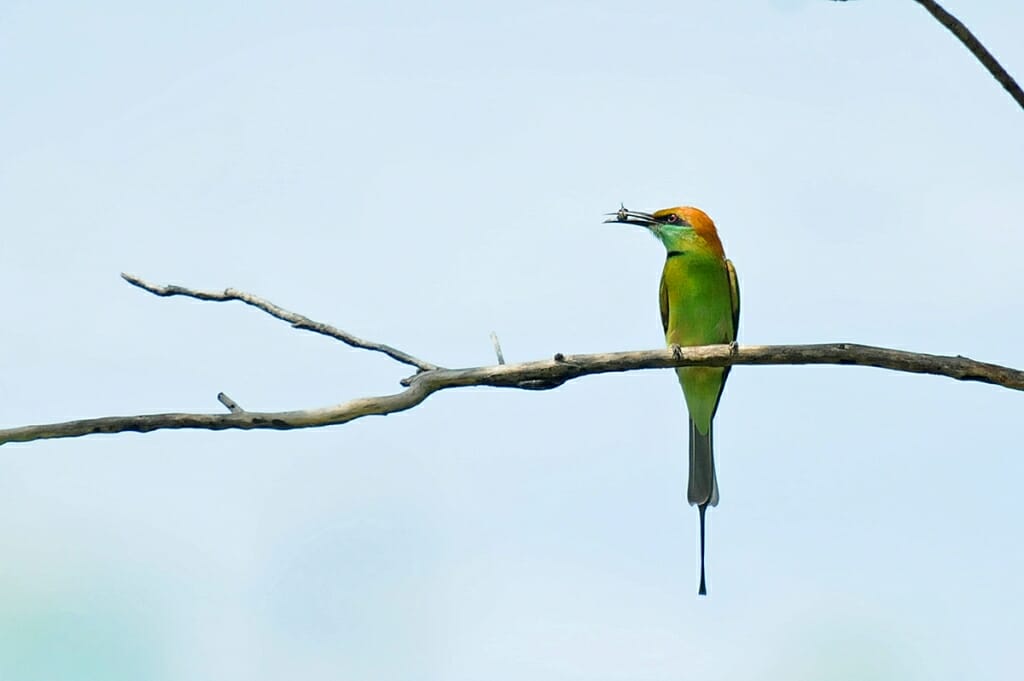
It is probably as remote as you can get in Thailand as a tourist. Needless to say, you can only visit Thi Lo Su waterfall on an organised tour. Technically, in the dry season, you can drive to the waterfall as well, but you’ll need a high-clearance vehicle, which means you’ll have to hire it in Mae Sot and take the journey on the infamous “Umphang Death Highway” named for the 1,200 turns it takes. You can find more details and images in my guide to visiting Thi Lo Su Waterfall.
Map of the Best National Parks in Thailand
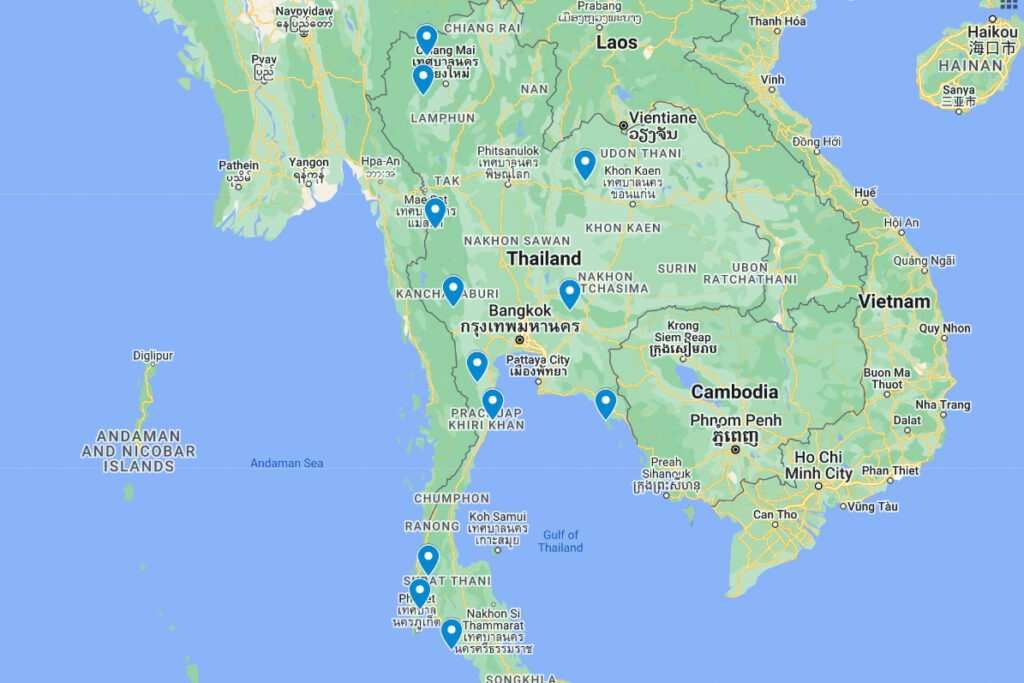
Final Thoughts on Exploring National Parks in Thailand
To sum up: the stunningly beautiful national parks in Thailand not only provide opportunities for recreational activities like hiking and camping but also preserve crucial habitats for numerous animal species. It is vital that we treat these areas as animals’ homes and behave accordingly (i.e. don’t litter, stick to the trails, and give animals the space they need).
In return, these parks and sanctuaries give allow you to journey into the heart of nature with all its beauty and diversity. So pack your bags, embrace the beauty of nature, and embark on an extraordinary journey into the National Parks of Thailand.
More on Exploring Thailand’s National Parks
- 7-Day Chiang Mai Itinerary: Temples, Waterfalls, and Hot Springs
- Amazing Wild Animals in Thailand And Where to See Them
- 12 National Parks in Thailand to Fall in Love With
- Easy Guide to Khao Sok National Park: How to Visit & What to See
- Guide to visiting Khao Yai National Park, Thailand
- Thi Lo Su Waterfall Jungle Adventure – Thailand off the Beaten Path
- Why You Must Visit Erawan National Park on your Trip to Thailand
- Spotting wildlife in Kaeng Krachan National Park
- Guide to Khao Sam Roi Yot National Park, Thailand
- Spotting Wildlife in Mu Ko Chang National Park, Thailand

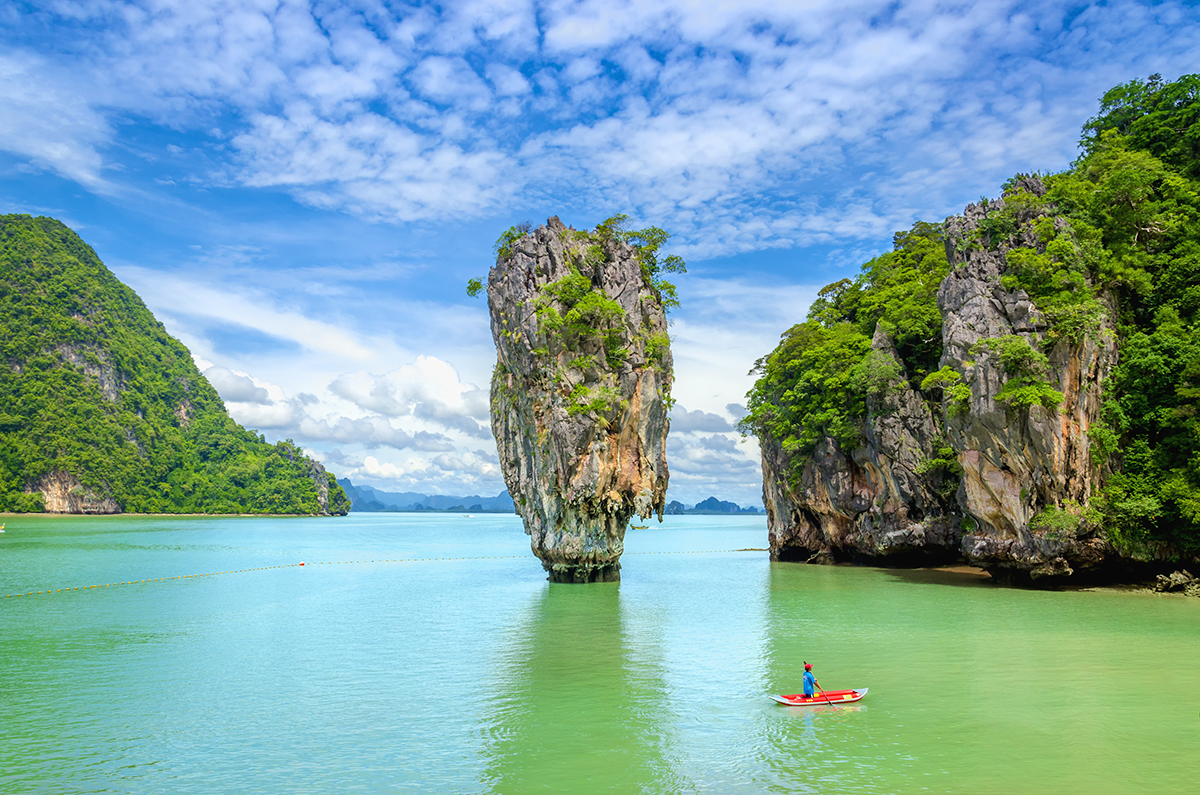
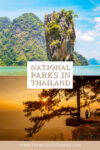
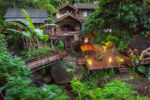
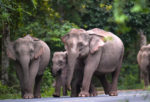

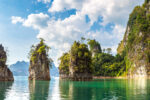
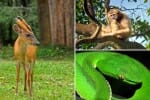
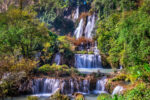
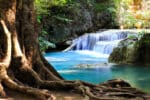
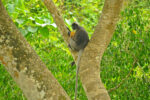
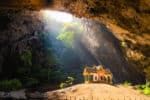
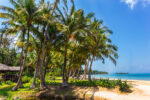
Your photos are gorgeous, particularly the ones of the waterfalls – the water is so pretty! You have inspired me to book a flight!